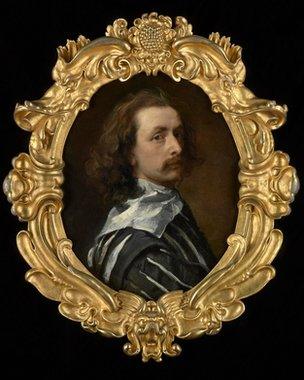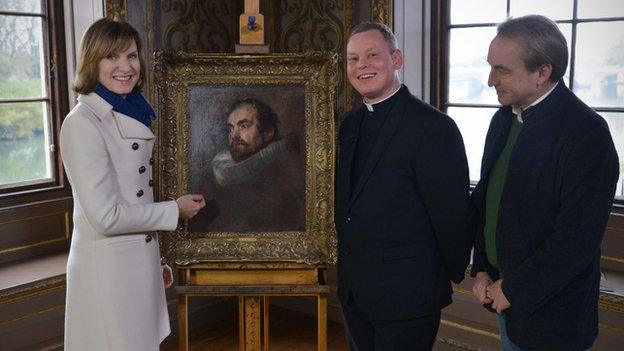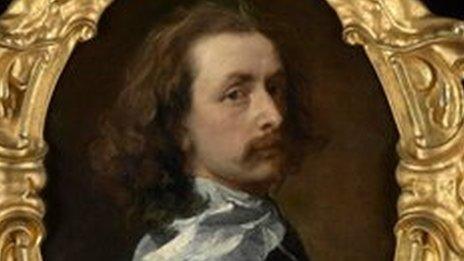Van Dyck campaign boosted after buyer pulls out
- Published

Van Dyck painted the self-portrait shortly before his death in 1641
The campaign to save Van Dyck's self-portrait for the nation has received a boost, after the billionaire art collector buying it agreed to withdraw.
Financier James Stunt - the son-in-law of Formula 1 boss Bernie Ecclestone - decided to step aside after witnessing "the people's passion" to keep the painting in the UK.
The painting has now been offered to the National Portrait Gallery for £10m, down from the original price of £12.5m.
So far the campaign has raised £3.6m.
The National Portrait Gallery and the Art Fund launched the Save Van Dyck campaign in November. Since then it has received donations from more than 8,000 members of the public.
'When I agreed to buy this great portrait I didn't expect the huge swell of public opinion and the strength of emotion its export would generate," said Stunt, who had planned to hang the portrait in his Los Angeles home.
He added that he had "carefully reconsidered" his position and hoped that his withdrawal, together with the reduced price, would see the appeal succeed.
The appeal now has four months to raise the remaining £6.4m, before the deadline of 20 July.
Flemish artist Van Dyck came to work in England in 1632 at the invitation of King Charles I.
This painting, which dates back to 1640 - shortly before the artist died - has been described as "one of the finest and most important self-portraits" in British art.
'Like losing Stonehenge'
The price was reduced following discussions with Stunt, current owner Alfred Bader and art dealer Philip Mould, who were impressed by the public support to keep the painting in the UK.
A joint statement from the Art Fund and National Portrait Gallery called it a "significant boost", which gave them "an improved chance of ensuring that the portrait remains on public display forever".

A Van Dyck portrait recently featured on the BBC's Antiques Roadshow - originally bought for £400 it was revealed to be worth £400,000
The work was in a private collection for almost 400 years before it was sold at auction in 2009.
It is believed to have been sold again in the interim.
When Stunt announced his intention to buy the painting, the Government issued a temporary export bar allowing campaigners time to try and save it for the nation.
The application process for an export licence has now been halted.
"Watching the public reaction to Van Dyck's self-portrait develop in this unprecedented way has been amazing, and, for this lover of British historical portraiture, reassuring," said dealer Mould.
"The picture has become an iconic focal point, and for many the thought of it going to the United States would be like losing a chunk of Stonehenge."
Currently on show at the National Portrait Gallery, the painting will embark on a three-year of the UK tour if it is saved.
- Published29 December 2013

- Published25 November 2013
